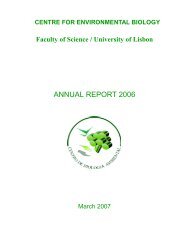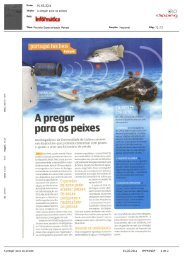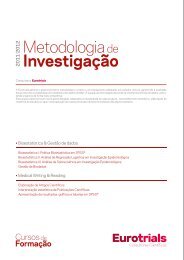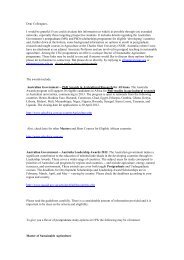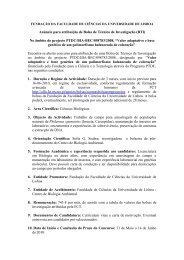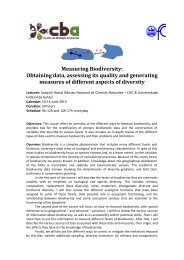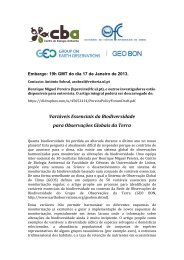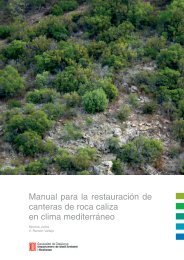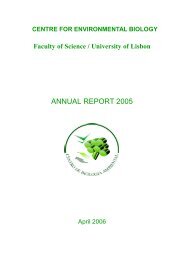European Red List of Vascular Plants - European Commission
European Red List of Vascular Plants - European Commission
European Red List of Vascular Plants - European Commission
Create successful ePaper yourself
Turn your PDF publications into a flip-book with our unique Google optimized e-Paper software.
Convention includes 612 <strong>European</strong> plant taxa and there is<br />
an overlap <strong>of</strong> 438 species between the two instruments.<br />
CITES regulates the international trade in endangered<br />
species and is legally binding to its parties. It provides a<br />
framework for countries to establish national legislation<br />
to implement the convention. The trade for all the species<br />
listed in Appendix II should be controlled in the form <strong>of</strong><br />
export permits and re-export certificates being required.<br />
For Europe there are only species listed under Appendix<br />
II. This includes all snowdrop species (genus Galanthus)<br />
with a total <strong>of</strong> seven occurring in Europe <strong>of</strong> which three<br />
are endemic to the region. The genus Sternbergia has<br />
only two species occurring in Europe: S. colchiciflora and<br />
S. lutea. Furthermore, Adonis vernalis is listed and all<br />
Cyclamen species <strong>of</strong> which ten occur in Europe. Moreover,<br />
the whole orchid family is included under Appendix II<br />
totalling around 140 <strong>European</strong> species. The EU Wildlife<br />
Trade Regulation (338/97) lists additional species to<br />
CITES that need management at <strong>European</strong> level. Only<br />
six species fall outside CITES under this regulation:<br />
Arctostaphylos uva-ursi, Arnica montana, Biarum davisii,<br />
Gentiana lutea, Lycopodium clavatum and Menyanthes<br />
trifoliata.<br />
In total, there are around 950 species in this group<br />
which will be from now on referred to as the “policy<br />
species”. Many <strong>of</strong> them are listed in more than one policy<br />
instrument and some are also aquatic plants or crop wild<br />
relatives 3 . This report analyses the assessments <strong>of</strong> 891<br />
species. Unfortunately not all species could be assessed, in<br />
particular information on mainly single country endemics<br />
from the Azores (24 species), Greece (13 species), Spain (8<br />
species), and nine Cyclamen species could not be secured<br />
for this report. There are assessments that were still under<br />
debate at the time <strong>of</strong> print or have not received feedback<br />
from a reviewer yet. Appendix 2 in this publication<br />
lists all species assessed so far and shows whether they<br />
are included in any <strong>of</strong> the policy instruments. A few<br />
taxonomic changes have taken place since the Annexes<br />
<strong>of</strong> the Habitats Directive and Bern Convention were<br />
drawn up and Table 1 shows a list <strong>of</strong> those species that are<br />
included here under a different name. Other species are not<br />
recognised as distinct species anymore (e.g. Centaurium<br />
Galanthus nivalis is listed under Annex V <strong>of</strong> the Habitats Directive – all snowdrops are also included in CITES as they are thought after for trade. Photograph © R. Wilford.<br />
3 Species that occur in more than one group are included in the analysis <strong>of</strong> each <strong>of</strong> the groups they belong to. A list <strong>of</strong> all species assessed in this project and<br />
whether they belong to more than one group can be found in Appendix 2 <strong>of</strong> this document.<br />
8



